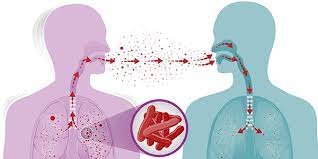By Pranjal Dutta (Weather Scientist – KVK, Dudhnoi, Goalpara, Assam)
The Covid-19 pandemic has not only hit normal life and economic activities all around the world and taken a huge toll on human lives; it has also put a positive impression on the environment.
To stop the speedy spread of this disease, the government has imposed a strict lockdown which as a result had a positive impact on the atmosphere.
In recent times, the impact of lockdown on air quality has been studied by many researchers and it is observed that the air pollutant concentration has reduced in every city of the world during the lockdown period.
It has been found that the PM (particulate matter) 2.5 and PM 10 are the most affecting air concentrators that control air quality of a place. For the first time, a pan India study has found a direct correlation between air pollution and covid-19.
A study entitled “Establishing a link between fine particulate matter (PM) 2.5 zones and Covid-19 over India based on anthropogenic emission sources and air quality data dealt with how people living in highly polluted areas are more vulnerable to coronavirus infections.
This study was conducted by scientists from various universities such as Indian Institute of Tropical Meteorology (IITM), Pune, National Institute of Technology Rourkela, IIT, Bhubaneswar and was partially funded by the Ministry of Earth Sciences, Government of India.
According to the study, regions that use huge amounts of fossil fuels such as petrol, diesel and coal by combustion in transport and industrial activities which lead to higher emissions of particulate matter (PM) 2.5 are more likely to have Covid-19 infections and related deaths.
The novel coronavirus sticks to the fine particles like PM 2.5 allowing them to move from one part to another by making the airborne transmission of Covid-19 more effective.
Particulate Matter (PM) 2.5 is an atmospheric particulate matter of diameter of fewer than 2.5 micrometers, which is around 3 per cent the diameter of a human hair. It is very small and can only be detected with the help of an electron microscope. It causes respiratory problems and also reduces visibility. PM 2.5 is an endocrine disruptor that can affect insulin secretion and insulin sensitivity in the human body, thus contributing to diabetes.
PM 2.5 particles are formed as a result of burning fuel and chemical reactions that take place in the atmosphere. Natural processes such as forest fires also contribute to PM 2.5 in the air and these particles are also the primary reason for the occurrence of smog.
Due to the mandatory lockdown implementation in all major cities in the world, PM 2.5 level has drastically decreased compared to the scenario before lockdown. Lockdown restricts the people movement and industry shutdown which has resulted in a 25–60 per cent reduction in PM 2.5 levels.
From all the studies found till date, it is clear that air quality has improved after the implementation of lockdown (during the Covid pandemic) which directly improves the health conditions of human beings and creates a healthy environment to live in.
Lastly, the pandemic gives a very important lesson to us—if we need good health and better living, then we need to reduce the use of transport (if not required) and to focus on the alternative solution strongly to reduce the air pollution.
























